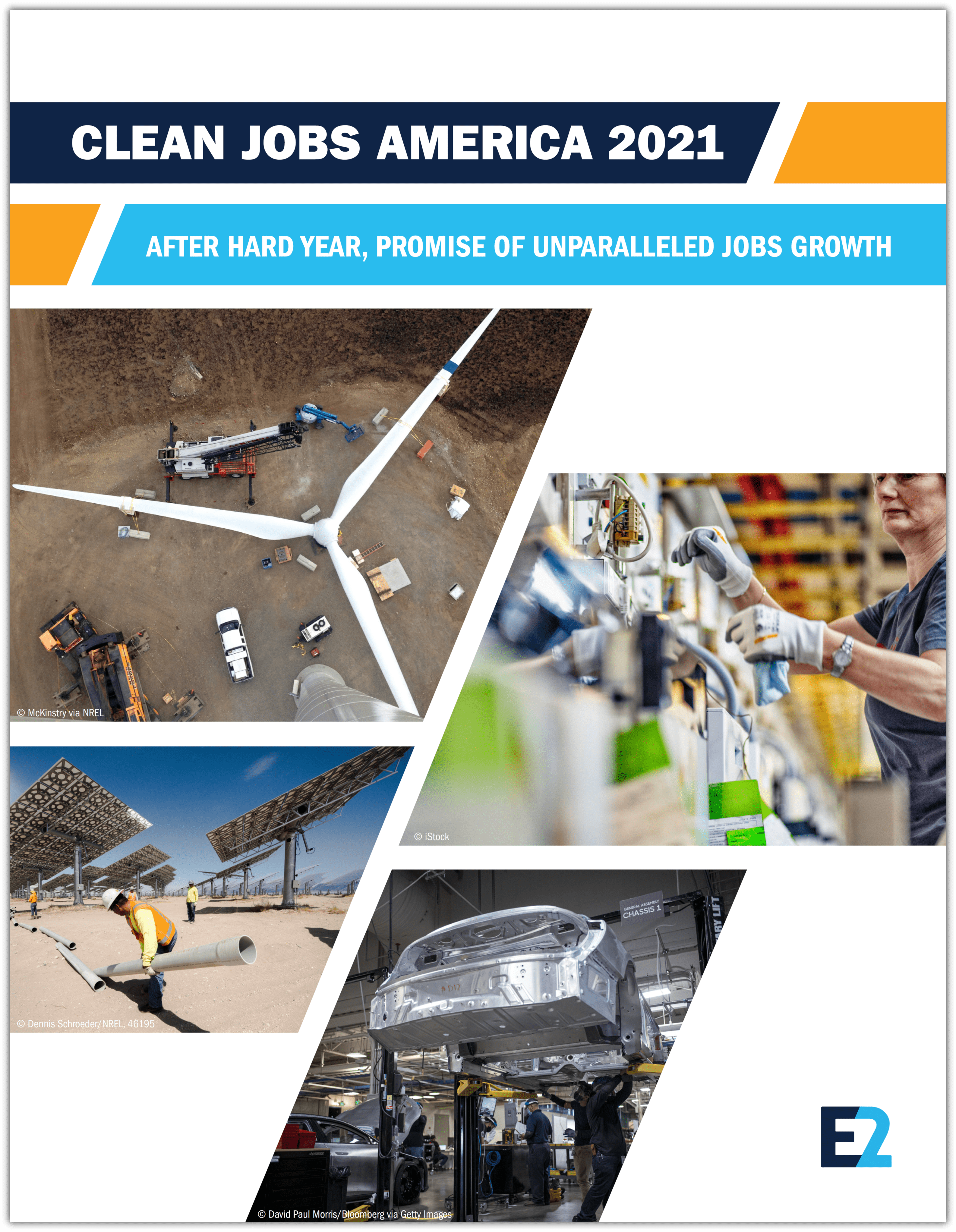After Hard Year, Promise of Unparalleled Jobs Growth
Summary:
In 2020, the number of clean energy jobs in America fell for the first time since E2 began tracking nationwide employment across the entire clean energy sector in 2015. Amid the COVID-19 pandemic and related economic contraction and the lingering impacts of policies from the previous administration that encouraged fossil fuels over clean energy, nearly 307,000 jobs were lost in wind, solar, energy efficiency and other clean energy sectors.
About 3 million Americans worked in clean energy at the end of 2020, down from 3.36 million the year before, according to the analysis of Bureau of Labor Statistics data and the findings of a national survey of more than 30,000 businesses across the U.S. economy.
Findings
- Jobs in energy efficiency, the biggest part of the U.S. energy sector, took the biggest tumble, falling more than 11 percent last year as COVID-19 pandemic restrictions prevented energy efficiency workers from entering commercial and residential buildings.
- Wind energy employment increased slightly, while solar employment fell, driven by declines in residential solar sales and installation which were hit hard early in the pandemic and could not fully recover despite growth in the second part of the year. 2 Overall, renewable energy jobs fell by nearly 6 percent.
- Jobs in grid modernization, battery and storage occupations dropped nearly 7 percent after two years of rapid growth driven by growing demand in batteries for electric vehicles and commercial and residential energy storage.
- Clean vehicle manufacturing jobs defied overall energy sector job loss patterns and grew nearly 3 percent as automakers increasingly shifted to cleaner and more efficient electric cars, trucks and buses. Electric and hybrid electric vehicle employment grew more than six percent adding over 12,000 new jobs in 2020, the biggest increase of any clean energy category.
Despite the overall decline, clean energy remains the biggest job creator across America’s energy sector, employing nearly three times as many workers as work in fossil fuel extraction and generation. More Americans still work in clean energy than work as middle and elementary school teachers, bankers, farmers or real estate agents. Median hourly wages for clean energy jobs also are about 25 percent higher than the national median wage, and also pay better than most fossil fuel extraction jobs (See Clean Energy Wages And Making Good Jobs Even Better sidebar on page 5).
California, Texas, New York and Florida remain the nation’s leaders for clean energy jobs, but smaller states such as Illinois, Massachusetts, Michigan and Ohio all employed more than 100,000 clean energy workers each at the end of last year.
2021 Clean Energy Employment Toplines
| Total Clean Energy | 3,048,603 |
| Renewable Energy | 492,891 |
| Grid & Storage | 137,872 |
| Energy Efficiency | 2,107,174 |
| Clean Fuels | 37,036 |
| Clean Vehicles | 273,630 |
Looking for More Info?
This is the sixth annual Clean Jobs America report produced by E2 based on analysis of the USEER, which was first released by the DOE in 2016. E2 was an original proponent of the DOE producing the USEER, and was a partner on the reports produced by the Energy Futures Initiative (EFI) and National Association of State Energy Officials (NASEO) after the Trump administration abandoned it in 2017.
If you are looking for additional insight into E2’s Clean Jobs America 2021 or our other clean energy employment reports, visit e2.org/reports. An FAQ is also available here to answer any questions.
Previous Reports
Clean Jobs America 2021 is the 6th national clean energy jobs report from E2. Previous reports can be accessed in the below links.

